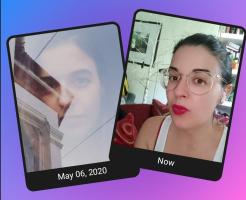Copy Link
Add to Bookmark
Report
Current Cities Volume 10 Number 11

_Current Cites_
Volume 10, no. 11 November 1999
The Library University of California, Berkeley
Edited by Teri Andrews Rinne
ISSN: 1060-2356
http://sunsite.berkeley.edu/CurrentCites/1999/cc99.10.11.html
Contributors: Terry Huwe, Michael Levy, Leslie Myrick,
Margaret Phillips, Jim Ronningen, Lisa Rowlison,
Roy Tennant, Lisa Yesson
Carnevale, Dan. "Web Services Help Professors Detect Plagiarism" The
Chronicle of Higher Education
(http://www.chronicle.com/free/v46/i12/12a04901.htm) - The Web has
brought a double-edged sword into conventional and distance-education
classrooms alike: easy access to digital information can mean
increased access to plagiarizable information, whether in the form of
online encyclopedia articles or from the growing online term-paper
market. Moreover, "copying" bits of somebody else's work is now as
arduous as cutting and pasting text. Ironically, the same nexus of
search engines that students use to find articles online can be tapped
by instructors to sniff out those "hauntingly familiar" or "overly
ornate" passages. But while entering the offending phrases into a
text-rich search engine is infinitely easier than a trip to a
bookstore or library to pore through Cliff's Notes or the Encyclopedia
Britannica, most instructors don't have the time to surf for purloined
bits. Enter web entrepreneurship in the shape of companies such as
Plagiarism.org, or IntegriGuard.com, which maintain databases of
papers culled from various sources; the former also offers to send
papers through a multiple search-engine gamut. Plagiarism.org's
resulting originality report highlights suspect passages of eight
words or more and provides a link to the web text it matches. In the
manner of a badly concealed speed-trap, prevention may lie at least
partially in the fact that professors openly register their students
and in some cases students upload their own papers for scrutiny.
Astonishingly, however, despite fair warning, in one early case study
in a class held at UC Berkeley, some 45 papers out of a total of 320
were found to contain "suspicious passages". - LM
Coombs, Norman. "Enabling Technologies: New Patrons: New Challenges"
Library Hi Tech 17(2) (1999): 207-210. - In his regular column on
enabling technologies for the "print disabled"- those who are dyslexic
and those who cannot hold and manipulate books - Coombs aims to
highlight the hardware and software tools that libraries need utilize
in order to make electronic resources accessible to the widest
possible range of users. His aim is to "persuade librarians that
taking on this new task will be a challenge and opportunity rather
than another burden." As a blind professor, Coombs discusses his
initial work with a speech synthesizer to access an online catalog
through to the capability to read web documents. In particular he
discusses IBMs most recent web browser for special needs patrons
called Home Page Reader Version 2.0. Using the numeric keypad and a
combination of individual other keys the user can send commands to the
program. What makes HPR more useful than simple screen readers is that
it allows for comprehensive HTML handling and navigation, so that it
will deal with frames, tables, forms list and menus. Unlike regular
screen readers it actually examines the HTML code itself but
unfortunately does not handle Java. In Coombs informative review he
has effectively highlighted some issues that should be of concern to
all librarians. - ML
Ganesan, Ravi. "The Messyware Advantage" Communications of the ACM
42(11) (November 1999) - Librarians and other information organizers,
take heart - we're messyware and we're indispensable. Playing devil's
advocate, the author starts by describing the Internet commerce
scenario which so many digital pundits espoused not long ago: a direct
link between producer and consumer, with the hated middleman
eliminated. In questioning why the opposite seems to be happening when
we place a high value on a new kind of dot-com middleman such as
Amazon or Yahoo, he introduces his concept of messyware, which he
describes as "the sum of the institutional subject area knowledge,
experienced human capital, core business practices, service, quality
focus and IT assets required to run any business." Why the term
"messyware"? While a software solution may be all you need when
systems are running perfectly, real life tends to get messy. (The
photographs accompanying the text get this point across admirably.
They depict people on a rainy streetcorner buying cheap umbrellas from
a roving umbrella salesman. Thanks to this middleman, they are getting
exactly what they need, when and where they need it, and would
certainly not benefit by cutting out the middleman and going directly
to the source.) Ganesan, bless him, uses libraries as an example of
the value of expert intermediation which can deal with the infomess.
His primary focus is on business, but there is plenty to ponder here
for all information professionals, including strategic pointers for
leveraging the messyware advantage. This article is just one of many
fascinating pieces on information discovery, the issue's special
theme. - JR
Jones, Michael L. W., Geri K. Gay, and Robert H. Rieger. "Project
Soup: Comparing Evaluations of Digital Collection Efforts" D-Lib
Magazine (November 1999)
(http://www.dlib.org/dlib/november99/11jones.html). - The Human
Computer Interaction Group at Cornell University has been evaluating
particular digital library and museum projects since 1995. In this
article they discuss their findings related to five projects (three
museum and two library). Their conclusions include: Effective digital
collections are complex sociotechnical systems; Involve stakeholders
early; Backstage, content and usability issues are highly
interdependent; Background issues should be "translucent" vs.
transparent; Determine collection organization, copyright, and
quantity goals around social, not technical or political, criteria;
Design around moderate but increasing levels of hardware and user
expertise; "Market" the collection to intended and potential user
groups; and, Look elsewhere for new directions. - RT
Lewis, Peter H. "Picking the Right Data Superhighway" New York Times
(http://www.nytimes.com/library/tech/99/11/circuits/articles/11band.ht
ml) - For surfers seeking that tubular high-bandwidth download, there
is now more than one wave to catch (depending, of course, on
availability), each with its own advantages and pitfalls. This article
examines three modes of high-bandwidth Internet service: cable modem,
DSL and satellite data services. Lewis was in the lucky position
(Austin, TX; expense account) to test all three, using as his criteria
speed, performance, price, security, and choice of ISP services. His
assessment(your results may vary): while any of the three is
preferable to an analog modem insofar as the connection is always on,
satellite data services can be easily factored out for all but the
most remotely situated users due to huge financial outlays, from
hardware to installation to monthly fees and possible phone charges to
distant ISP providers. Speed is also an issue, at a "measly" 400 kbps.
Cable modems, while they offer theoretically the speediest of
connections: (30 mbps possible), suffer from "Jekyl-and-Hyde"-like
yawls in performance, since cable is a shared resource. The more
neighbors to whom you gloat over your wealth of bandwidth, the worse
it will become. A more likely figure is 1 mbps. You may also find you
have security concerns. DSL, on the other hand, has a dedicated line,
so there are no security problems. But it is hands down the costlier
alternative. Moreover, outside of a radius of 17,500 feet from the
phone company's central office (or about 3 miles), performance suffers
significantly, unless you are willing to pay extravagant sums. Data is
loaded at somewhat slower speeds than cable's best numbers: download
can run from 384 kbps to 1.5 mbps, with upload consistently logy at
128kbps. All these considerations aside, Lewis goes with DSL. The
deciding factor is often in the details: having to deal with the
telephone company vs the cable company, the choice of ISPs (in the
case of cable modems, practically nonexistent), and so on. - LM
Malik, Om. "How Google is That?" Forbes Magazine
(http://www.forbes.com/tool/html/99/oct/1004/feat.htm) Walker, Leslie.
".COM-LIVE" (The Washington Post Interview with Sergey Brin, founder
and CEO of Google)
(http://www.washingtonpost.com/wp-srv/liveonline/business/walker/
walker110499.htm) - For those users of the recently-launched search
engine Google (http://www.google.com/) who have consistently found its
searching and ranking facilities spot on, and wondered, "How do they
DO that?", two recent articles offer some answers; but the algorithm
remains a mystery. With the backing of the two biggest venture capital
firms in the Silicon Valley, and a PC farm of 2000 computers, another
boy-wonder team out of Stanford has revolutionized indexing and
searching the Web. The results have been so satisfying that Google
processes some 4 million queries a day. Google, whose name is based on
a whimsical variant of googol, i.e. a 1 followed by 100 zeroes, claims
to be one of the few search engines poised to handle the googolous
volume of the Web, estimated to be increasing by 1.5 million new pages
daily. It uses a patented search algorithm (PageRank technology) based
not on keywords, but on hypertext and link analysis. Critics describe
the ranking system as "a popularity contest"; the Google help page
prefers to characterize it in terms of democratic "vote-casting" by
one page for another (well, some votes "count more" than others ...).
Basically, sites are ranked according to the number and importance of
the pages that link to it. In a typical crawl, according to Brin,
Google reads 200 million webpages and factors in 3 billion links.
Decidedly NOT a portal, when Google came out of beta in late September
the only substantive change made to the fast-loading white page
inscribed with the company name and a single query textbox was a
polished new logo. A helpful newish feature is Googlescout, which
offers links to information related to any given search result. There
are also specialized databases of US government and Linux resources.
It appears that the refreshing lack of advertising on its search page
will not last forever: in the works is a text-based (rather than
banner-based) "context-sensitive" advertising scheme, generated
dynamically from any given query. - LM
Miller, Robert. "Cite-Seeing in New Jersey" American Libraries 30(10)
(November 1999): 54-57. - Tracking down fragmentary citations or
hard-to-locate material is a classic library service. But in this
piece Miller highlights how the tools for performing this service have
changed. Classic citation-tracking resources are still used, but now
the Web can be used as well. A few interesting anecdotes illustrate
how a little imagination, experience, and perseverance can make the
Internet cough up the answer when the usual resources fail. Miller
illustrates how the best librarians are those who can absorb new tools
into their workflow as they become available, and therefore become
more effective at their job. - RT
netConnect. Supplement to Library Journal October 15, 1999. This very
slim but incredibly pithy supplement to LJ is modestly subtitled "The
Librarian's Link to the Internet". I doubt anyone needs this
publication to get online, but the point is taken. It is aimed at
bringing focused information regarding the Internet to LJ's audience.
And if this first issue is any indication, they will be successful
doing it. Contributions to this issue include Clifford Lynch on
e-books (an absolute must-read for anyone interested in this
technology), a couple pieces by Sara Weissman, co-moderator of the
PubLib discussion, an article on net laws from an attorney at the
Missouri Attorney General's Office, a practical article on creating
low-bandwidth web images without sacrificing quantity and quality, and
an article on Web-based multimedia from Pat Ensor, among others. This
is a solid publication that I cannot wait to see again. Disclosure
statement: I am a Library Journal columnist. - RT
Pitti, Daniel. "Encoded Archival Description: An Introduction and
Overview" D-Lib Magazine (November 1999)
(http://www.dlib.org/dlib/november99/11pitti.html). - Encoded Archival
Description (EAD) is a draft standard SGML/XML Document Type
Definition (DTD) for online archival finding aids. In this overview
article, the father of EAD explains what it is, why it exists, and
what future developments may lie in store. - RT
Planning Digital Projects for Historical Collections in New York State
New York: New York State Library, New York Public Library, 1999
(http://digital.nypl.org/brochure/). - This brochure serves as a
useful high-level introduction to digitizing historical collections.
Following a brief history of New York Public Library's digitization
projects, it dives into the heart of the matter -- planning a
digitization project. Main sections include: What does a digital
project involve?; Why undertake a digital project?; How to plan for
digital projets; How to select collections and materials for a digital
project; How to organize information; and, How to deliver materials
effectively. A brief list of resources is also included. Before
getting started in such a project you will need to do much more
reading than this, but it nonetheless is a useful place to start -- in
either it's print or web format. - RT
Seadle, Michael. "Copyright in the Networked World: Email Attachments"
Library Hi Tech 17(2) (1999): 217-221. - Seadle takes two commonplace
uses of copying and evaluates whether they are legally acceptable in a
digital environment. He gives a brief overview of the four keys test
for determining "fair use" before discussing the specific cases. The
first case is that of a faculty member distributing via email an
article from the online interactive edition of the Wall Street Journal
to his entire class. He had previously done similar things with the
print version of the Journal and felt that this new use was still fair
use. Unfortunately it would appear that the ability to make a full and
perfect reproduction of a digital document destroys any barriers to
further copying by students and would invalidate a fair use
justification of this practice. In the second scenario a reference
librarian sends via email a list of citations and full-text articles
to a patron from the FirstSearch database. The librarian decided that
if she deleted her copy of the downloaded documents that the end user
would be complying with specific language in the database allowing for
the downloading and storing documents for no more than 90 days. The
differences are the librarian is sending the information to one person
and not to a class, and the patron could have found the articles
himself. So in essence the library was making an allowable copy for
the user. Seadle admits that his arguments are not conclusive or
exhaustive but in a clear way he outlines two interesting, yet normal
copyright situations facing librarians and faculty. - ML
"Tomorrow's Internet" The Economist 353 (8145) (November 13, 1999):23
(http://www.economist.com/editorial/freeforall/19991113/index_sa0324.html).
- The cover story of this issue of The Economist focuses on the
aftermath of the now-notorious "findings of fact" in the Microsoft
antitrust case. This related article describes in detail the emerging,
network-intensive style of computing that may reduce or eliminate the
need for costly operating systems like Windows. Look no further for a
balanced treatment of the forces behind "open system" computing, "thin
clients", netcomputers and the like. As with all their technology
reporting, the editors rely on plain English and disdain technobabble.
- TH
_________________________________________________________________
Current Cites 10(11) (November 1999) ISSN: 1060-2356
Copyright (c) 1999 by the Library, University of California,
Berkeley. _All rights reserved._
Copying is permitted for noncommercial use by computerized bulletin
board/conference systems, individual scholars, and libraries.
Libraries are authorized to add the journal to their collections at no
cost. This message must appear on copied material. All commercial use
requires permission from the editor. All product names are trademarks
or registered trade marks of their respective holders. Mention of a
product in this publication does not necessarily imply endorsement of
the product. To subscribe to the Current Cites distribution list, send
the message "sub cites [your name]" to listserv@library.berkeley.edu,
replacing "[your name]" with your name. To unsubscribe, send the
message "unsub cites" to the same address. Editor: Teri Andrews Rinne,
trinne@library. berkeley.edu.






















